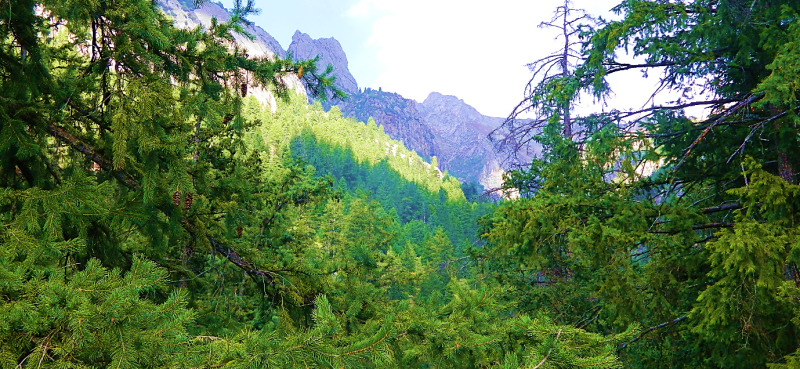Forest, Wildlife & Environment Department Government of Gilgit-Baltistan

Picea smithiana (Pinaceae)
Common name: Kachel, Himalayan Spruce
Local name: Kachul, Raien
Description
Trees to 60 m tall and 200 cm dbh, with a conical crown of pendulous branchlets. Bark pale brown, breaking into irregular plates. Branchlets pale brown or pale gray, glabrous. Leaves spreading radially, directed obliquely forward, slender, curved, quadrangular in cross-section, 33-55×1.3-1.8 mm, with 2-5 stomatal lines on each surface, apex acute or acuminate. Seed cones green, maturing brown, lustrous, cylindric, 10-18 × 4.5-5 cm. Seed scales broadly obovate, thick, ca. 3 × 2.4 cm, broadly triangular-obtuse. Seeds dark brown, ca. 5 mm, with a 10-15 mm wing (Wu and Raven 1999).
Distribution and Ecology
Mainly located in Astore, Gilgit and Diamer Districts of Gilgit-Baltistan. Afghanistan, India: Kashmir, Nepal, Pakistan, S Tibet Wu and Raven (1999). Hardy to Zone 7 (cold hardiness limit between -17.7°C and -12.2°C) (Bannister and Neuner 2001).
Vladimir Dinets (e-mail, 2004.1.14) reports that Kalam, in Pakistan’s Swat Valley, has a large forest of Cedrus deodara with some Picea smithiana and Pinus wallichiana. He also found it growing along the trail to Nanga Parbat Base Camp. “The trailhead is accessible from Gilgit by a hired jeep, or Raikot Bridge on the Karakoram Highway by hitchhiking (early morning only). Near the trailhead are some Pinus gerardiana, Juniperus semiglobosa and Cupressus torulosa, higher up – Pinus wallichiana and Picea smithiana (slim, but up to 50 m tall).
